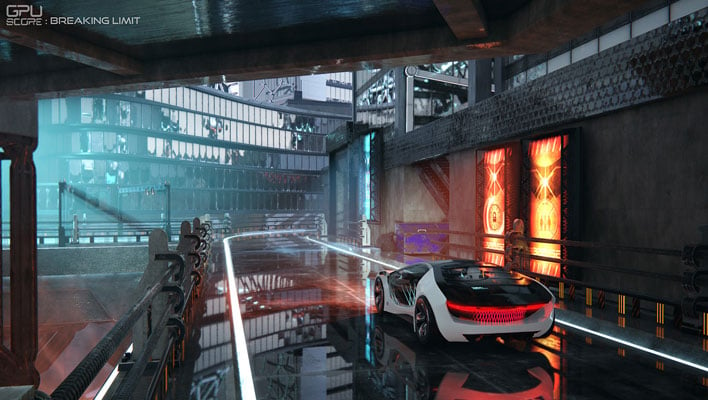“Breaking Limit is a true cross-platform solution, enabling effortless comparison of performance across various devices utilizing the same workload. Additionally, it has a desktop-dedicated mode tailored for high-end devices, catering to extreme workload demands,” Basemark explains.
That’s a point of interest as ray tracing continues to permeate the industry. It’s gotten to the point where even some smartphone models are capable of flexing ray-traced graphics, which was unheard off not all that long ago.
The regular Breaking Limit benchmark supports Windows, Linux, Android, and iOS devices. The graphics API depends on the operating system and consists of either DirectX 12, Vulkan 1.3, or Metal 3. And obviously a GPU capable of ray tracing is required to run the benchmark.
There are three test modes. They include…
- Official: The main benchmark that uses standard settings
- Official Native: Uses the same content and settings as Official, but uses device’s display resolution as the rendering resolution (only available on mobile devices running on Android and iOS).
- Custom: Uses the same content as Official, but allows users to change settings from the default ones used in Official.
Meanwhile, the more demanding Breaking Limit Ultra benchmark supports Windows 11 and 10 PCs with 6GB of RAM and 2GB of storage, and Linux systems running Ubuntu 20 with 8GB of RAM and 2GB of storage. Likewise, it requires a GPU capable of ray tracing. It also requires a x64 CPU.
The three test modes for the Ultra build include…
- Official: The main benchmark that uses standard settings.
- Upscaled DLSS/FSR: Upscaled tests measure the performance of the devices using the main two upscaling techniques: AMD’s FSR2 and nVidia’s DLSS2 (only available on Breaking Limit Ultra).
- Custom: Uses the same content as Official, but allows users to change settings from the default ones used in Official.
“Both versions target ray tracing capable devices exclusively. For game developers, artists, and GPU device manufacturers, this benchmark offers valuable insights into the capabilities and content limitations that can be achieved. Additionally, as a true cross-platform benchmark, it allows precise comparisons of the performance of phones vs. laptops vs. desktops,” Basemark states in a whitepaper. “By using the same workload without optimizations for different platforms, it provides accurate performance comparisons.”
Breaking Limit (regular and Ultra) takes a hybrid ray tracing approach, combining ray queries with rasterization. We’re not at a point where hardware is truly capable of delivering a pure ray tracing experience in more demanding games, and Basemark’s approach is the same one that game developers largely take when implement ray tracing.
Specifically, Breaking Limit uses ray-traced reflections and shadows.
“The shadows of the main directional light are ray traced. Other lights rely on shadow maps to preserve performance. The ray tracing of reflections is done at 75% of the main resolution to save performance while maintaining enough precision,” Basemark explains.
It also employs ground-truth ambient occlusion (GTAO), volumetric fog, motion blur, and temporal anti-aliasing (TAA), with 11 shadow-casting light sources. The benchmark taps into around 2.1GB of video memory.
The Ultra version ups the ante with ray-traced global illumination and a higher resolution, among other variables. It consumes around 6GB of VRAM.

